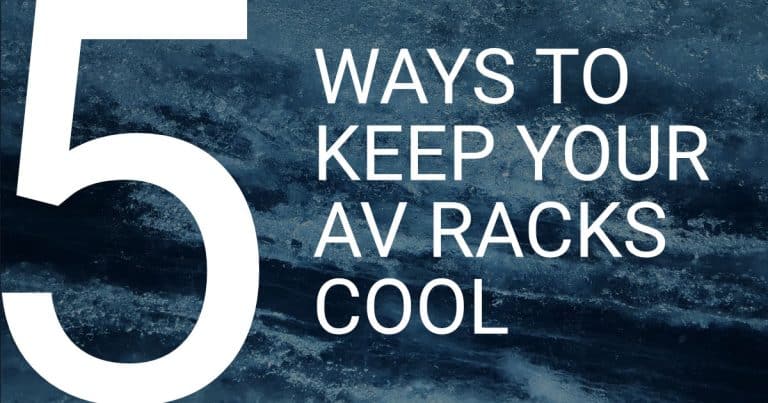5 Ways To Keep Your AV Racks Cool

It’s a fact of life in the AV industry – there is always pressure to cram the maximum amount of equipment in the smallest possible space. Thanks to the laws of physics, all that electronic gear is going to generate heat. Excessive heat can compromise the performance of AV equipment, shortening its life and potentially even causing it to fail.
We’ve compiled some easy, practical tips to help you manage heat in your AV racks.
- Think airflow. The single biggest thing an integrator can do to improve cooling and avoid overheating is to consciously think about how heat and air are moving through the rack. Where are the vents on each product? Which units are going to generate the most heat? Where is cool air coming into the rack, and how is warm air escaping? Are there any other heat sources in the environment to consider?
- Put the biggest heat generators at the top of the rack. Hot air rises, so if you know certain items are the biggest heat-creating culprits, make sure they are slotted in towards the top of the rack, allowing the heat to dissipate without warming up other equipment along the way.
- Leave gaps. The user manual for each product will usually give guidance on how much space should be allowed above and below the unit (1U or 2” is typical. We know that rack space is precious, but always respect this guidance to ensure that cool air has room to circulate.
- Fans. Sometimes passive cooling is just not going to be enough. Rackmount fans are relatively affordable and are a great way to cool your rack if heat is becoming an issue. A fan sucking in cool air at the bottom of the rack and a second fan blowing out hot air at the top is the way to go. Fan noise can be really irritating, so check the noise specs of the fans if your AV rack is positioned where this could be a problem.
- Do you need all that power? Look for modern, efficient product designs with low idle power consumption when specifying equipment (latest generation Class D amplifiers would be a prime example!) – after all, the power that is generating all that heat has cost and environmental implications too.
We hope these simple points help you (and your AV systems!) to stay cool and efficient.